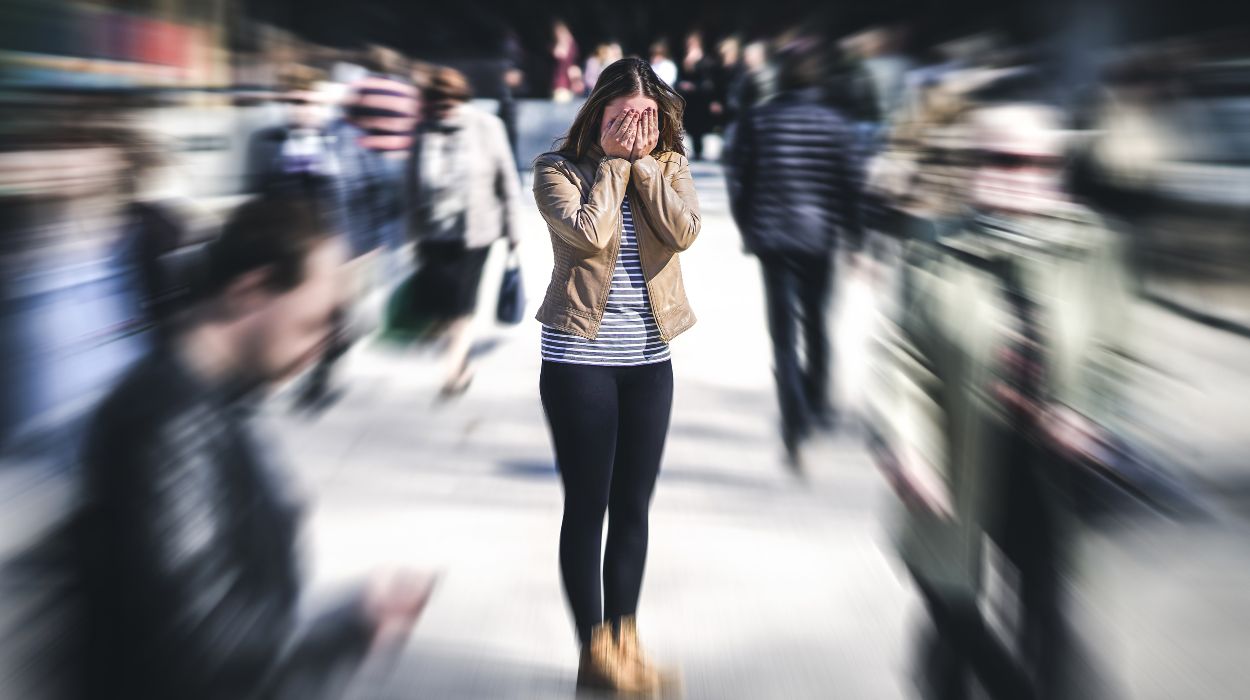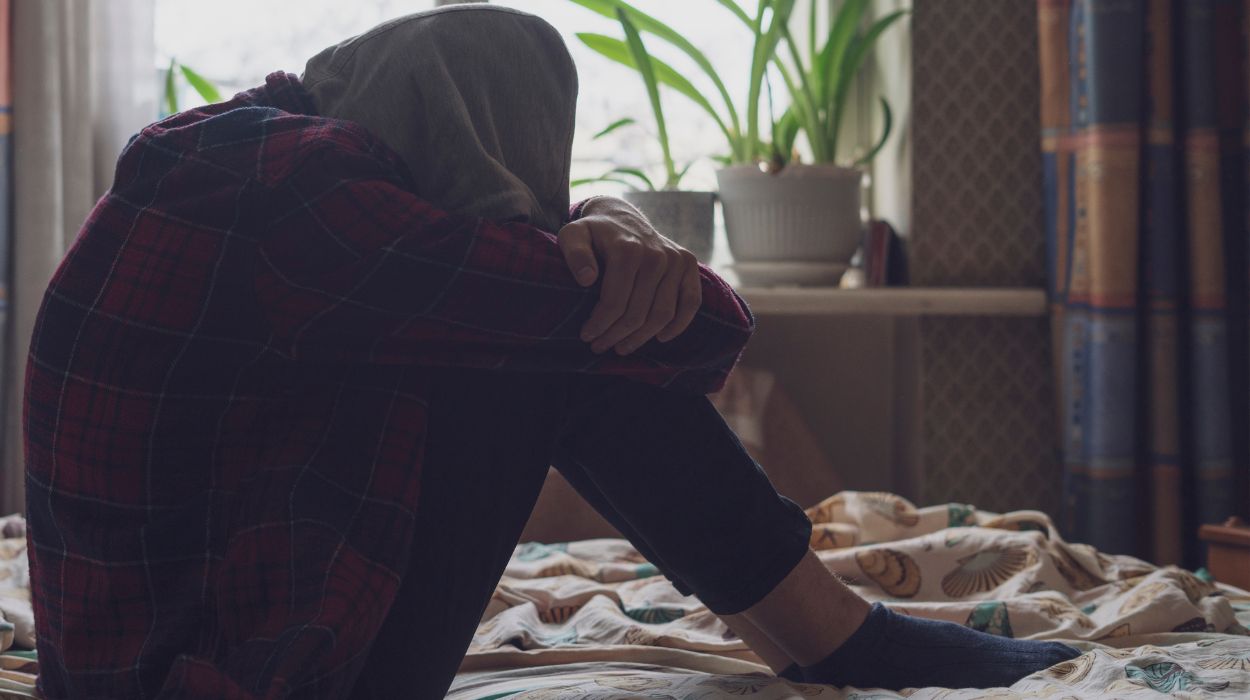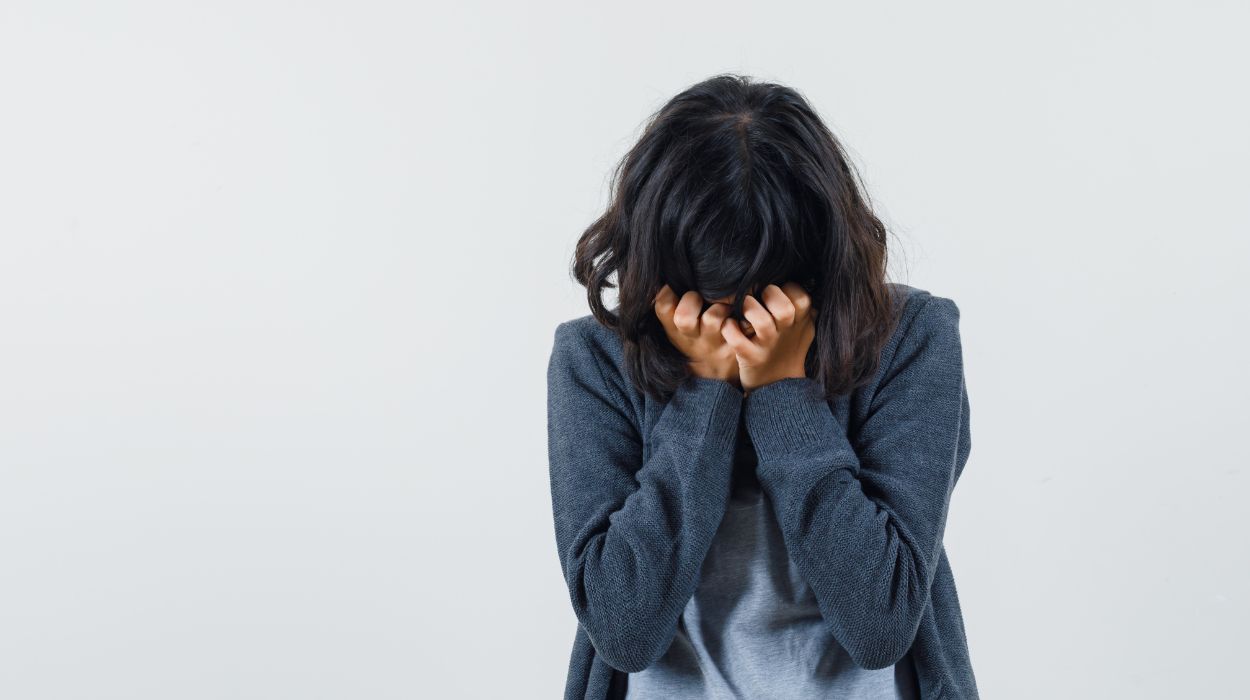Those who have ever had a panic attack can vouch for us all that they are one of the worst life experiences. The severity of a panic attack is different depending on the individual. Personally, panic attacks for me felt like everything was closing in, where you are desperate to breathe some air. This was shortly followed by uncontrollable trembling, sweating, and an electric current-like feeling down the spine. Not to mention, the shoulders and upper back stiffen up.
Like me at one point, many of you might be curious to know, how we stop panic attacks. To answer this question, we have put together a short article that covers:
- What is a Panic Attack
- Signs of a Panic Attack
- What Causes Panic Attacks?
- How to Stop a Panic Attack
- Seek Help If You Have Panic Disorder
6 Ways To Stop A Panic Attack
There are many ways in treating panic attacks including:
- Cognitive behavioral therapy (CBT)
- Talk to yourself
- Deep Breathing
- Regular Exercise
- Eat regular meals
- Avoid caffeine and alcohol
What Is A Panic Attack?

Panic attacks, also known as anxiety attacks are short bouts of intense fear, lasting no longer than 30 minutes. During a panic attack, the nervous system is stimulated, which releases a rush of adrenaline, which then turns on the fight or flight response.
This response occurs because the brain signals for a threat, giving your body the ability to fight or run away. Although we know that there is no threat in most cases during a panic attack.
There are many emotional symptoms, as well as physical symptoms that occur during a panic attack, which include: a sense of being trapped, despair, rapid heart rate, shortness of breath, dizziness, shivering, chest pain, tunnel vision, and muscle tension. It is a vicious cycle because these symptoms can make ongoing panic attacks worse.
Panic attacks always have a trigger, which differs from person to person and are often difficult to identify by yourself.
Although panic attacks may feel scary, they are often not dangerous, unless you self-harm or harm those around you. However, if panic attacks are not addressed, they can become more frequent and cause panic disorders. A panic disorder can be defined as a recurrent and longer-lasting panic attack.
Approximately 4.7% of adults in the United States have experienced a panic disorder at least once in their lifetime.
Signs Of A Panic Attack
Panic attacks tend to give off signs that can be seen by the people looking from the outside. We have included 4 of the most common ones, which have been highlighted below.
- Sweating
- Trembling & Shaking
- Freezing
- Change in Skin Color
Sweating
A common sign that shows up in those who are experiencing a panic attack is sweating. A panic attack activates a stress response that increases core body temperature and perspiration. Sweat tends to show up around the forehead or palms. This is usually followed by a dry mouth due to a degree of dehydration.
Trembling & Shaking
Sweating is typically accompanied by shaking. Panic attacks activate the nervous system with adrenaline, putting an individual in the fight or flight response, which can then show up as excessive shaking. You can not physically stop yourself from shaking unless you learn to cope with the negative thinking pattern.
Freezing
Opposed to the fight or flight, your body can also enter a “freeze” mode. When someone is experiencing this freeze response you may see them sitting still and possibly not even blinking. This is a natural defense mechanism that sets in for an individual to “play dead” so the threat would move on. Even though we know that panic attacks are random and occur without threat.
Change In Skin Colour
People experiencing a panic attack can often show a more pale skin color. The reason for this is that the blood is taken away from the skin and is directed toward the heart, which is often beating a lot faster than normal.
What Causes Panic Attacks?

There are many psychological, environmental, and pharmacological causes including:
- Long term stress
- Mental health conditions
- Low self-esteem
- Alcohol withdrawals
- Side effects of some medicine
- Caffeine intake
Long Term Stress
Long-term stress can flood your body with the hormone cortisol, which has been associated with anxiety and panic attacks. This really shows the importance of managing your life stressors before they get out of hand.
Mental Health Conditions
If you have a mental health condition i.e., anxiety disorders, chances are that you could go into a state of panic, especially if you are not being addressed by a mental health professional.
Low Self-esteem
People with low self-esteem tend to beat themselves up about every little mistake that they have made. Being in a low mood can cause anxiety or panic attacks.
Alcohol Withdrawal
Along with many other withdrawal symptoms like depression, panic attacks also seem to be of regular occurrence when one eliminates alcohol. The best option would be to reduce alcohol slowly instead of abruptly stopping.
Side Effects Of Some Medicine
Some medications that are used to treat conditions like ADHD, asthma, thyroid problems, and seizures have had many reports of anxiety and panic attacks.
Caffeine Intake
Caffeine mimics some of the symptoms that are a panic attack i.e., higher heart rate and jitters. People who already suffer from panic attacks may believe that they are having a panic attack, which would make things worse.
How To Stop A Panic Attack
Cognitive Behavioral Therapy (CBT)
CBT allows you to talk to a real trained professional, who aims to unfold the root of your fearfulness and panic attacks by using a variety of strategies like cognitive reconstructing, guided discovery, exposure therapy, journaling, etc. This will help change your thought pattern and stop recurring panic attacks.
A session of CBT lasts around 1 hour and the number of sessions depends on the patient. Personally, I found that 12 sessions worked well to the point that I never experienced any anxiety or panic attacks again.
Talk To Yourself
Positive self-talk is a great way to distract yourself from the symptoms of a panic attack, which would eventually go away, allowing you to get on with your day. You could include some positive affirmations that would go along the lines of “Nothing is wrong with me” “I cannot be controlled by anything” or “I am better than anxiety”.
Deep Breathing
Breathing exercises, also known as deep and controlled breathing, is a method to prevent panic attacks. Deep breathing can take the focus away from the panic attack symptoms and place them onto the body. This can put a full-fledged panic attack to a halt.
To do some deep breathing, you would breathe in from the nose and focus on filling the stomach with air, upon doing so, slowly release the air from the mouth. You must repeat and focus on breathing and then engage with reality.
Regular Exercise
Exercise releases endorphins (happy hormones) and reduces stress. This outcome could improve mood and lower the chances of a panic attack. The ACSM recommends 30 minutes of aerobic exercise, 5 times per week. Another option is vigorous aerobic exercise 3 times per week.
Eat Regular Meals
If blood sugar falls, there are multiple negative effects like dizziness and tiredness. These effects may cause a state of panic. For this reason, make sure that you eat your regular meals to stabilize blood sugar. 3 square meals and 2 nutritious snacks are recommended by the NHS England
Avoid Caffeine And Alcohol
Caffeine and alcohol mimic and worsen some of the symptoms of panic attacks. Therefore, we recommend either avoiding or limiting caffeine and alcohol intake.
Seek Help If You Have Panic Disorder
If you find that panic attacks are becoming too frequent, debilitating, or causing suicidal thoughts, you should seek help from your licensed healthcare provider. Your health care provider may go through a brief assessment where you may then be signposted to a mental health professional who can work with you on a personal level and may recommend psychotherapy and perhaps medication like selective serotonin reuptake inhibitors.
Conclusion
We have learned that a panic attack is nothing but a brief but intense fear that gives off many signs and symptoms. The signs that others around us should look out for are: sweating, trembling, freezing, and a change in color of complexion to pale.
There are many causes of panic attacks, which are different for exercise. Based on our understanding, panic attacks come about from long-term stress, mental health conditions, low-self esteem, alcohol withdrawal, side effects of some medicine, and caffeine intake.
There are many ways to cope with panic attacks, we highlighted a few which include: cognitive behavioral therapy (CBT), talking to yourself, deep breathing, regular Exercise, eating regular meals, avoiding caffeine and alcohol
Frequently Asked Questions
According to the Anxiety and Depression Association of America (ADAA), a Panic disorder is recurring panic attacks and GAD is the presence of and persuasive worry
Opposite to what you may believe, panic attacks feel bad, but they are not dangerous at all
Panic attacks and panic disorders are two times as likely among women compared to men, this is not to say that it does not occur in men
CBT, self-talking, breathing exercises, regular exercise, eating regular meals, avoiding caffeine and alcohol
A panic disorder is an anxiety disorder
 Expert's opinion
Expert's opinion